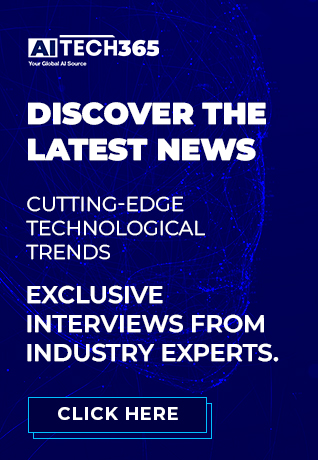In a strategic move timed for the accelerating data-and-AI era, Databricks announced on November 10, 2025 that its platform on Google Cloud now supports the new C4A VM instances powered by Google’s custom Arm-based “Axion” processors. The blog post highlights three major benefits: faster performance, lower cost (better price-performance), and higher energy efficiency for workloads such as SQL warehousing, ETL pipelines and AI/ML training and inference.
In the announcement, Databricks emphasises that customers on Google Cloud’s “Classic compute environments” can already adopt the C4A VMs without rewriting code or changing workflows. It cites performance gains of up to ~65 % better price-performance and ~60 % better energy efficiency vs comparable x86-based instances. One customer quote from Epsilon notes a 20-25 % reduction in runtime and a 10-15 % cost efficiency improvement for core ML pipelines when migrating to Axion-based C4A VMs.
Databricks frames this update as part of its broader partnership with Google Cloud complementing its lakehouse architecture, integrations with Google’s Vertex AI and Gemini models, Unity Catalog federation with BigQuery, serverless SQL/workflows, etc.
What This Means for the AI Computing Industry
From a macro-view, this announcement signals several trends and implications for the AI computing and cloud infrastructure ecosystem:
-
Arm-based Processor Adoption Accelerates
The move by Google to deploy its custom “Axion” Arm-based processors (in the C4A VMs) in a major cloud offering for data/AI workloads – and for Databricks to endorse them – underscores the shift away from purely x86-based compute in high-end AI/data work. With claims of ~60 % energy efficiency improvements, cloud providers are seeking both cost and sustainability advantages. For AI computing, this means new architectures (beyond standard GPU/TPU/CPU x86) are gaining serious traction.
-
Compute Cost & Efficiency Become Differentiators
As AI/ML workloads scale (larger models, more training/inference, more data pipelines), compute cost and efficiency become key bottlenecks. The Databricks-Google announcement underlines that enterprises want “faster insight, lower cost” and “sustainability” (i.e., energy efficiency) as part of their data/AI strategy. For the industry, this pushes vendors, cloud providers and chipmakers to innovate not just on raw performance but cost efficiency, power efficiency, and architectural openness (ease of migration).
-
Unified Data + AI Platforms Gain Momentum
Databricks emphasises its unified lakehouse architecture (data engineering, warehousing, analytics, AI) and now supports C4A VMs on Google Cloud. This reinforces the trend that businesses want platforms that span the full stack: data ingestion → transformation → analytics → model training → inference → governance. For the computing industry, compute infrastructure must adapt to support more heterogeneous workloads (SQL, ETL, ML) under one roof rather than siloed hardware for each.
-
Sustainability / Energy Efficiency as Strategic Imperative
With claims of ~60 % better energy efficiency, this announcement signals that AI infrastructure buyers are increasingly factoring in sustainability not just performance. This raises the bar for hardware and data-centre providers. For the AI computing industry, this means that future generations of chips/instances will be judged not just by FLOPS or throughput, but by energy use, cooling, data-centre power, and carbon footprint.
-
Competitive Pressure on Cloud Providers and Compute Vendors
The Google Cloud + Databricks move puts pressure on other cloud vendors (AWS, Azure) and chip/instance providers (GPUs, CPUs, TPUs, FPGAs) to respond. It also raises the expectation for enterprises: they will now benchmark not just “can we run the job” but “how efficient is the job – compute cost, power, runtime, scalability.” For the AI computing industry this means amplified competition, innovation and potentially faster hardware refresh cycles.
Also Read: Prismatic Unveils MCP Flow Server for AI Integrations
Business Effects & Implications for Enterprises Operating in this Industry
For businesses especially those offering data/AI services or managing large scale data/AI pipelines this announcement matters in several concrete ways:
-
Lower Total Cost of Ownership (TCO) & Faster Time-to-Value
The cited 20-25 % runtime reduction and 10-15 % cost savings by Epsilon suggest that switching to more efficient infrastructure can translate into meaningful operational savings and faster outcomes. Enterprises can justify investments in data/AI projects more easily when infrastructure becomes a competitive advantage rather than simply a cost centre.
-
Easier Migration / Less Friction
Because Databricks states customers “can adopt C4A instances without changing their workflows or rewriting code” (on Google Cloud) this lowers the barrier to upgrading infrastructure. That means enterprises with existing Databricks deployments (on Google) can benefit quickly. For service-providers and ISVs it means less heavy lift for migration and faster realisation of benefits.
-
Scalability and Performance for Advanced Use-cases
With claims of improved SQL query latency, concurrent workloads, shorter model training/inference, enterprises running large-scale model training (e.g., generative AI, predictive, real-time inference) or heavy data-warehouse workloads can scale more aggressively. This could open up new product/service opportunities e.g., faster ML model iterations, more real-time analytics, improved AI-driven customer experiences.
-
Sustainability as Business Value
Organisations increasingly face pressures (internal, regulatory, investor) to reduce energy consumption and carbon footprint. By deploying more efficient compute infrastructure (Arm-based Axion processors), businesses can tick both performance and sustainability boxes. For providers in the data/AI industry, this can be an offering differentiator: “we deliver high-performance AI with lower power usage.”
-
Vendor & Partner Ecosystem Leverage
For ISVs, consulting firms, system integrators specialising in data/AI on Databricks + Google Cloud, this announcement means a fresh angle for go-to-market: articulate the efficiency gains, performance improvements, sustainability credentials of the new instance types. For technology partners, this may trigger new offerings optimised ML pipelines specifically tuned for C4A, benchmarked workloads, migration services, cost-optimization consultancy.
-
Strategic Alignment & Future Planning
Enterprises need to plan ahead: this announcement signals the likely future of compute infrastructure for AI/data will be more heterogenous (Arm, specialised chips, openness). Businesses should evaluate whether to standardise on cloud providers supporting these new architectures, whether to refactor workloads for portability, and how to validate partner ecosystems (software, frameworks, tools) are optimized for new hardware. For the AI computing industry, this means that businesses who ignore infrastructure evolution risk falling behind in efficiency and agility.
Conclusion
The Databricks and Google Cloud announcement around Axion C4A VMs signals a pivotal moment in the AI-computing landscape: performance, cost-efficiency, sustainability and unified architecture are converging. For businesses operating in the data/AI domain, this means infrastructure choices are no longer back-office or purely technical they are strategic levers. Enterprises that adopt such efficient compute platforms can realise faster time-to-value, scale more confidently, and align with sustainability goals.
From the vantage of the AI computing industry, the message is clear: expect more custom, energy-efficient processors; more seamless integration of data/AI pipelines; and more pressure on cost, power, and performance simultaneously. For service providers, software firms, chip makers and cloud providers, the competitive playing field is being reshaped. As AI becomes ubiquitous, infrastructure becomes a key differentiator.





